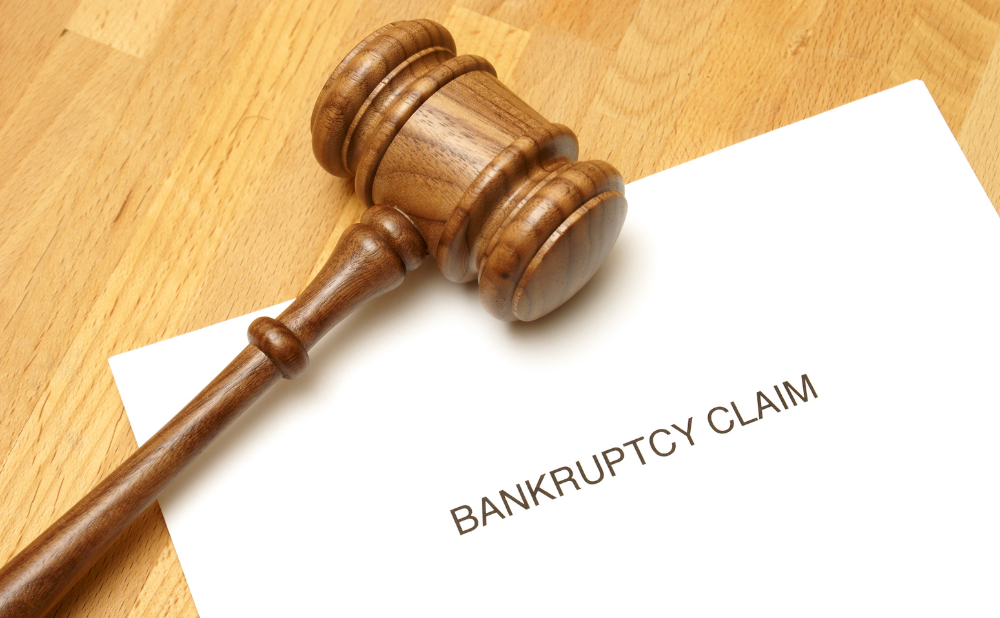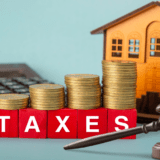Credit card debt can feel like a crushing weight, leaving you struggling to keep your head above water financially. If you’re drowning in credit card bills and considering drastic measures, you’re not alone. Many Americans find themselves in this position, wondering if filing bankruptcy for credit card debt is the right move. It’s a complex decision with serious long-term implications, but for some, it can provide a much-needed fresh start.
Before we discuss filing bankruptcy for credit card debt, it’s important to understand how prevalent this issue is. According to CNBC, 43 percent of card holders carry a balance each month. That’s nearly half of all credit card users who aren’t paying off their balances, potentially accruing interest and fees that compound their debt over time.
So how do you know if filing bankruptcy for credit card debt is the right choice for you? Let’s explore the options, process, and potential consequences to help you make an informed decision about your credit card debts.
Understanding Your Credit Card Debt Situation
Before considering bankruptcy, get a clear picture of your financial situation. Start by tallying up all your credit card debts, including balances, interest rates, and minimum payments.
This process can be eye-opening and even scary, but it’s essential for making an informed decision. You might be surprised to learn that the average credit card balance in the U.S. is over $6,000.
If your debt exceeds this amount or feels unmanageable, you’re not alone. Many people find themselves in this situation due to unexpected life events, medical bills, or simply overspending.
Assessing Your Ability to Repay
Once you clearly understand your debt, assess your ability to repay it. Consider your income, essential expenses, and how much you can realistically put towards debt repayment each month.
Credit card payoff calculators are helpful tools in this process. They give you an estimate of how long it might take to pay off your debt with different payment amounts.
If you find that you can’t make more than the minimum payments or that it would take years to pay off your debt, filing bankruptcy for credit card debt might be worth considering. Consider the impact of filing bankruptcy on your financial situation and whether it aligns with your long-term financial goals.
Alternatives to Bankruptcy for Credit Card Debt
Before jumping straight to bankruptcy, explore other options that might help you manage your credit card debt. You can attempt to eliminate credit card debt through other methods first.
Here are a few alternatives to consider:
Debt Consolidation
Debt consolidation involves taking out a new loan to pay off multiple credit card debts. This can simplify your payments and potentially lower your interest rate. However, it’s crucial to address the root cause of your debt to avoid falling back into the same pattern.
Credit Counseling
Nonprofit credit counseling agencies provide valuable advice and may help you set up a debt management plan. These plans often involve negotiating with creditors to lower interest rates or waive fees. They may also assist in creating a repayment plan tailored to your financial capabilities.
Debt Settlement
Debt settlement involves negotiating with creditors to pay less than what you owe. While this can reduce your debt, it can negatively impact your credit score. According to Freedom Debt Relief, a leading debt relief company, credit card debt forgiveness programs typically take 24 to 48 months.
When to Consider Filing Bankruptcy for Credit Card Debt
If you’ve exhausted other options and still find yourself unable to manage your credit card debt, it might be time to consider bankruptcy. Carefully evaluate your ability to repay your debts and the potential consequences before proceeding.
Here are some signs that filing bankruptcy for credit card debt could be the right choice:
- Your debts are more than 50% of your annual income.
- You’re using credit cards for basic necessities.
- You’re being sued or threatened with lawsuits by creditors.
- You’re considering withdrawing from retirement accounts to pay debts.
Remember, bankruptcy should be a last resort. It’s a serious decision with long-lasting consequences but can also provide relief and a fresh start for those struggling with overwhelming debt.
Types of Bankruptcy for Credit Card Debt
When filing bankruptcy for credit card debt, there are two main types to consider: Chapter 7 and Chapter 13. Each has pros and cons, and the right choice depends on your financial situation. It’s important to understand the differences between these chapters to determine which aligns best with your circumstances.
Chapter 7 Bankruptcy
Chapter 7 bankruptcy, often called “liquidation bankruptcy,” involves selling off non-exempt assets to pay creditors. After this process, most remaining unsecured debts, including credit card debt, are discharged, meaning you’re no longer legally required to pay them. Filing Chapter 7 bankruptcy can have a significant impact on your credit score.
The good news is that Chapter 7 bankruptcy can often eliminate credit card debt entirely. However, strict eligibility requirements exist. If your average income is below the median income for your state and you don’t have enough disposable income, you most likely qualify to file for Chapter 7 bankruptcy. Before making any decisions, carefully consider the implications of Chapter 7 bankruptcy and how it may affect your ability to obtain credit in the future.
Chapter 13 Bankruptcy
Chapter 13 bankruptcy, also known as “reorganization bankruptcy,” involves creating a repayment plan to pay off some or all of your debts over 3-5 years. This bankruptcy is often chosen by those with regular income but who need help restructuring their debts. It offers an alternative to Chapter 7 for individuals who may not qualify or prefer a repayment plan option.
In Chapter 13 bankruptcy, you may keep more of your assets but will need to stick to a strict repayment plan. Credit card debt is typically unsecured debt in Chapter 13, meaning it’s given lower priority in the repayment plan. Often, you’ll only pay a portion of your credit card debt through the plan. Chapter 13 bankruptcy provides a structured approach to debt repayment while offering certain protections and benefits.
The Process of Filing Bankruptcy for Credit Card Debt
Filing bankruptcy for credit card debt involves several steps. It’s important to understand the bankruptcy process and seek guidance from a qualified attorney in Irwin, Greensburg, or North Huntingdon. They can provide personalized advice based on your specific circumstances.
Here’s a general overview of the process:
- Credit Counseling: Before filing, you’re required to complete a credit counseling course from an approved provider.
- File Petition: You’ll need to file a petition with the bankruptcy court, along with detailed financial information.
- Automatic Stay: Once you file, an automatic stay goes into effect, stopping most collection actions against you. The automatic stay provides legal protection from creditors while your bankruptcy case is pending.
- Meeting of Creditors: You’ll attend a meeting where the trustee and creditors can ask questions about your financial situation. This meeting, also known as the 341 Meeting of Creditors, allows creditors to review your bankruptcy petition and ask questions under oath.
- Debt Discharge (Chapter 7) or Repayment Plan (Chapter 13): Depending on the bankruptcy type, your debts will either be discharged, or you’ll begin your repayment plan.
- Financial Education Course: Before your case is closed, you’ll need to complete a financial education course. This course aims to equip you with the knowledge and skills to manage your finances responsibly in the future.
Consequences of Filing Bankruptcy for Credit Card Debt
While filing bankruptcy for credit card debt can provide relief, it’s important to understand the potential consequences:
- Credit Score Impact: Bankruptcy can significantly lower your credit score, remaining on your credit report for 7-10 years. A lower credit score may make obtaining loans, credit cards, or favorable interest rates more challenging.
- Difficulty Obtaining Credit: You may find it harder to get approved for loans or credit cards in the future. Lenders often view bankruptcy as a negative factor when assessing creditworthiness.
- Higher Interest Rates: If approved for credit, you’ll likely face higher interest rates. Lenders may perceive you as a higher-risk borrower.
- Potential Asset Loss: In Chapter 7, you may have to give up some assets. The bankruptcy trustee may sell certain assets to repay creditors.
- Public Record: Bankruptcy filings are public record. This means that information about your bankruptcy case will be accessible to the public.
Long-term Effects on Your Financial Life
It’s crucial to consider the long-term effects of filing bankruptcy for credit card debt. While it can provide immediate relief, it can also impact your financial life for years to come. You may find it difficult to rent an apartment, get a mortgage, or even secure certain jobs. Filing bankruptcy may also limit your options for debt consolidation or obtaining favorable loan terms.
However, it’s not all doom and gloom. Many people who file for bankruptcy rebuild their credit. It requires patience and disciplined financial habits, but recovering and even thriving financially after bankruptcy is possible. Consider seeking guidance from a financial advisor to develop a solid plan for rebuilding your financial well-being.
Legal Considerations When Filing Bankruptcy for Credit Card Debt
When filing bankruptcy for credit card debt, understand some key legal aspects. Consulting with a bankruptcy lawyer in Westmoreland County or Fayette County is essential to ensure you fully comprehend the legal implications.
- Fraud Allegations: If you made large purchases or cash advances shortly before filing, creditors might allege fraud. Creditors may investigate unusual spending patterns to determine if any fraudulent activities occurred.
- Look-back Period: Creditors can scrutinize your financial activities in the months leading up to your filing. They aim to identify any preferential transfers or other actions that may be challenged in bankruptcy court.
- Non-dischargeable Debts: Some debts, like student loans, certain taxes, and child support, typically can’t be discharged in bankruptcy. It’s important to note that bankruptcy does not eliminate all types of debt.
- Attorney Representation: While you can file without an attorney, the process is complex and having legal representation is often beneficial. A bankruptcy attorney can provide guidance, protect your rights, and navigate the complexities of bankruptcy law.
Conclusion
Filing bankruptcy for credit card debt is a serious decision that shouldn’t be taken lightly. While it can provide relief from overwhelming debt, it also comes with significant consequences that can impact your financial life for years to come. Before deciding to file, make sure you’ve explored all other options and sought professional advice. Explore alternative debt relief solutions like debt consolidation or credit counseling to see if they better suit your situation.
Remember, bankruptcy is designed to give honest debtors a fresh start. If you find yourself drowning in credit card debt with no feasible way out, filing bankruptcy for credit card debt could be the lifeline you need. However, it’s crucial to approach this decision with a clear understanding of the process, consequences, and alternatives. Seeking guidance from a financial advisor or bankruptcy attorney can help you evaluate the potential outcomes and make an informed decision aligned with your long-term goals.
Ultimately, the goal is to regain control of your financial life. Whether through bankruptcy or other means, taking action to address your debt is the first step towards a more stable financial future. Remember to create a realistic budget, track your spending, and avoid incurring further debt to maintain long-term financial stability.
FAQs about filing bankruptcy for credit card debt
How long does it take to rebuild credit after Chapter 7?
Rebuilding credit after Chapter 7 bankruptcy is a gradual process that typically takes 2-3 years of consistent, responsible financial behavior. This includes making all payments on time, keeping credit utilization low, and possibly using secured credit cards or becoming an authorized user on someone else’s account. While the bankruptcy will remain on your credit report for 10 years, many people see significant improvements in their credit scores within the first couple of years after discharge.









